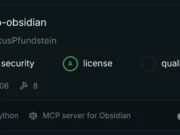Introduction
Email addresses are often the keys to digital identities. With the right tools, you can uncover social media profiles, online activity, and even business records associated with an email. This process, known as email lookup or reverse email search, combines technical data gathering, open-source intelligence (OSINT), and smart web tools. This guide explains how to use these techniques effectively and safely to discover who is behind an email.
1. What Is a Free Email Lookup Tool
A free email lookup tool searches public and semi-public sources to find data linked to an email address. These tools can identify the person’s name, job title, profile photo, company, and connected accounts.
Popular and reliable lookup tools include:
- Hunter.io – Ideal for finding professional email addresses and verifying domains.
- VoilaNorbert – Great for checking if an email is valid before sending.
- Clearbit Connect – A Gmail and Outlook extension that reveals social profiles and job info.
- RocketReach – Finds professional profiles, social links, and contact details.
- Lusha – Extracts business emails and LinkedIn contact info.
- Pipl – One of the most advanced people search engines using deep web data.
These tools use APIs and indexing algorithms to gather and cross-check information from multiple databases.
2. Reverse Email Search Explained
A reverse email search works in the opposite direction: instead of finding an email address, it reveals information about the owner. This is useful for verifying senders, preventing scams, and identifying anonymous accounts.
Technical tools and methods include:
- Social Catfish – Uses image and email matching to identify fake profiles.
- Spokeo – Provides social links, addresses, and phone numbers associated with emails.
- BeenVerified – Combines email lookups with background data.
- OSINT Framework – A resource that lists multiple open-source lookup engines and search filters.
For a more manual approach, you can use Google operators like:
"email@example.com"This exact match search can uncover public mentions, websites, or directories where the email is listed.
3. Finding Users via Social Networks
Social networks often store user email data, which can be used to locate public profiles.
Here are proven methods:
- Facebook: Enter the email in the search bar. If the user has not hidden it, their profile may appear.
- LinkedIn: Upload your contacts or use advanced search filters to identify accounts tied to emails.
- Twitter (X): Some users link emails to recover passwords, which can help you trace connected handles.
- Instagram: Use the account recovery page to check if the email matches an existing profile.
Browser extensions like Email Extractor for Chrome, FindThatLead, and ContactOut can also identify and connect social profiles automatically.
4. Advanced Lookup Techniques
To get the most out of your lookup process, combine multiple methods:
Use Google Advanced Search Operators:
site:linkedin.com "email@example.com"
site:facebook.com "email@example.com"These reveal platform-specific results.
Check Gravatar:
Visit Gravatar to see if an avatar exists for that address.
https://en.gravatar.com/[md5 hash of email]Leverage OSINT Tools:
- theHarvester for collecting emails from company domains.
- Maltego CE for visual mapping of digital identities.
- HaveIBeenPwned to check if an email appeared in data breaches.
5. Maximize Free Resources and Privacy Awareness
While most tools offer premium features, you can maximize free tiers by combining several sources and browser extensions.
Always ensure:
- You use data ethically and legally.
- Avoid entering your own personal email into untrusted services.
- Verify sources before drawing conclusions from lookup results.
Conclusion
Free email lookup and reverse search tools give you access to a powerful layer of open-source intelligence. By combining OSINT frameworks, social network searches, and specialized tools like Hunter, Clearbit, and theHarvester, you can uncover a complete digital footprint tied to any email. Whether for cybersecurity, recruitment, or verification, these methods provide clear, data-driven results.
















